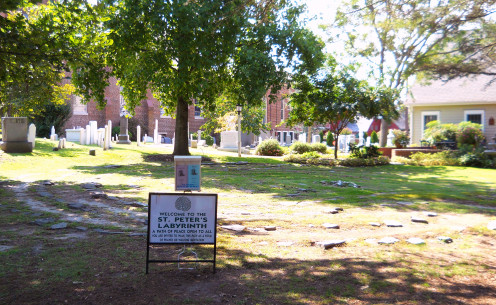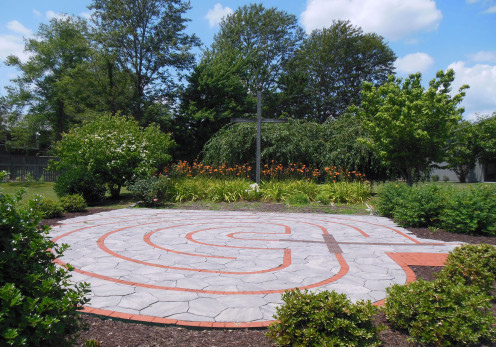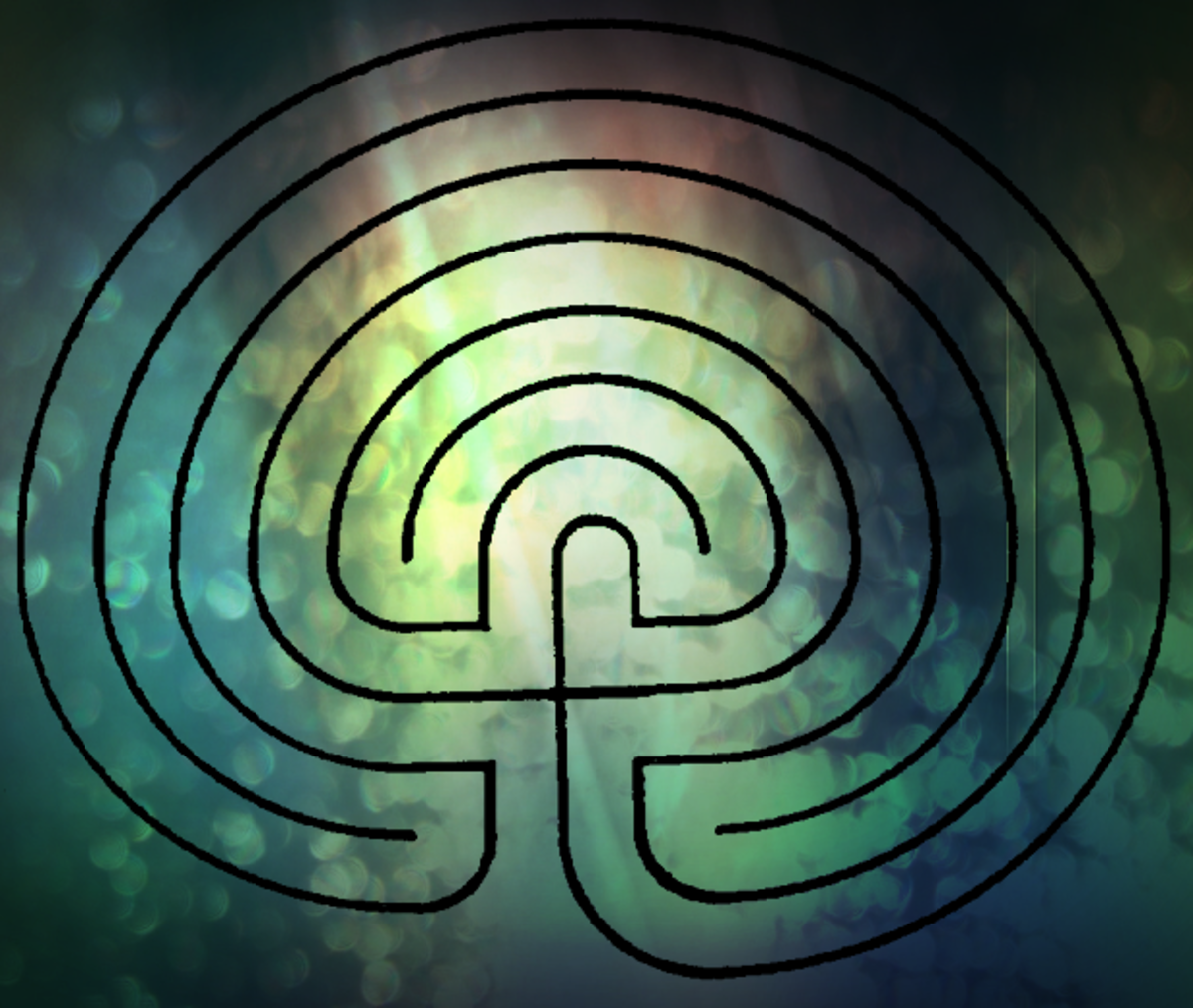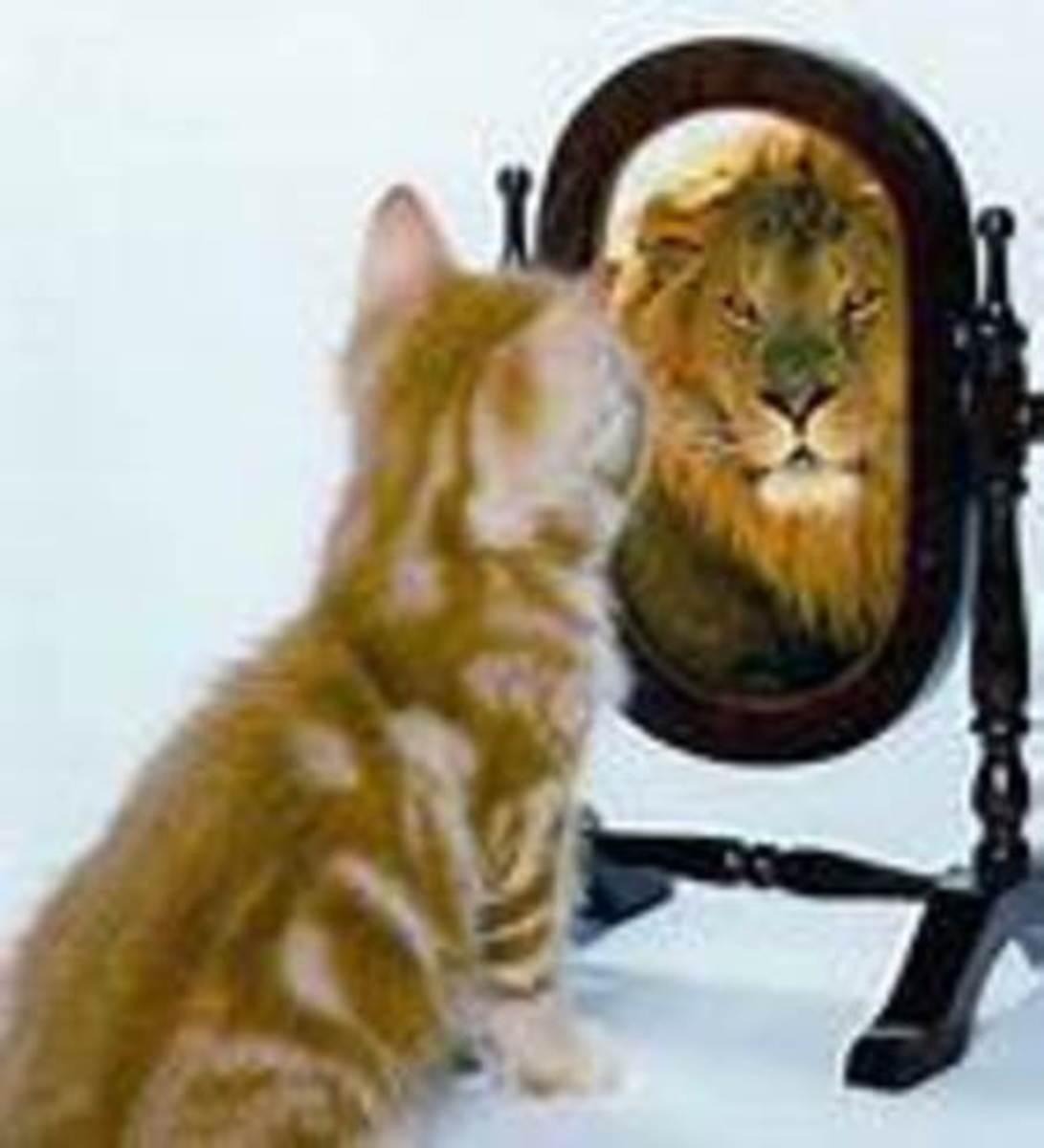Walking the Labyrinth in Times of Sickness, Stress & Grief

Mysteries of the Labyrinth
Even before I knew the historical mysteries of the labyrinth, I was drawn to its fascinating designs, and particularly in times of grief, sorrow and trouble, felt compelled to walk them. Doing so gave me a sense of peace and comfort and due to my personal experience, I believe labyrinths can be an effective and powerful tool in working through grief, depression or through concerns about one's health or the health of loved ones.
In preparing to write this article, I searched through the medical and other literature looking for hard facts and scientific research about the emotional healing qualities of labyrinths. I discovered many anecdotal stories similar to my own, but only a few articles contained research to back up those claims.
However, the wonderful thing about walking the labyrinth is that one doesn't need scientific knowledge or hard facts to reap the healing benefits of taking a personal journey through its winding paths, and unlike using prescription medications or trying to self-medicate with drugs or alcohol in order to ease the pain of grief, sorrow or depression, there are no harmful side effects from walking a labyrinth.
There is also no right, or wrong way to walk it, though this article will discuss methods that others have found useful in their own healing.
In her book, "Lessons in Loss and Loving: Hope and Guidance for Confronting Serious Illness and Grief," Michelle A. Reiss, PH.D, wrote: "The goals of grief, whether anticipated or not, are to survive, to accept, to remember and to find a way to move forward into whatever your new life has to offer you."
It is my belief that walking the labyrinth is a metaphor for life and for the journey of grief. It can be a path to peace that's open to all who enter its mysterious circles.
This article will discuss a brief history of the labyrinth, provide suggestions for its use as an emotional healing tool, and information about where to find a labyrinth near you.
History of Labyrinths
Labyrinths have been found in all cultures from the Amerindian tribes to the ancient Egyptians, Celts and Chinese. Labyrinth patterns have also been carved all over the world, usually in significant ritual sites such as those associated with death and burial.
Some interesting facts:
- A paleolithic etching was found in a tomb in Siberia.
- A drawing on a block of granite in Ireland is thought to be 4,000 years old.
- Hopi tribes in North America have drawn labyrinth patterns on Mesa stones.
- In Egypt, the layout of pathways in Pharaohs' tombs are similar to patterns found in labyrinths. These tombs date back to 1200 and 2000 BC.
- In pagan labyrinths, the journey was likened to the journey that the soul took after death.
- In Kabbalistic tradition the labyrinth had a magical function that was thought to originate from the secrets of Solomon and those secrets were revealed only to the initiated few.
- Though labyrinths were first associated with pagan myths, European Christians imbued them with new symbolism and installed them in many church buildings throughout Europe. Christians likened the circular path to the soul's journey through life and during the Middle Ages nearly 25% of cathedrals had them. The most famous was the French, Chartres Labyrinth, which was built between 1194 and 1220. The Chartres is still considered the finest labyrinth left in existence.
- By the 18th century, labyrinths fell out of favor and were no longer being used in a Christian context. Though the reason for this isn't certain, some historians have attributed it to the Renaissance Era, which changed people's attitudes from a myth and mysitical approach to one based on scientific fact.
- During the middle of the 20th century labyrinths started making a come-back when people in the New Age Movement began using them as a means to explore spirituality without direct affiliation with churches.
- More recently, churches and people of all faiths have also begun using them as an aid to promote the spiritual development of followers and books such as, "Walking the Labyrinth: A Spiritual and Practical Guide," by Sally Welch, explore the different ways individuals and groups can use a labyrinth for prayer and reflection.
Today, you can find labyrinths in many sites, including churches, medical centers, spas, parks, schools, prisons, playgrounds, retreat centers and even people's backyards. Some modern day structures are permanent but they can also be drawn on portable canvas, or can be temporary outlines drawn in sand, in parking lots or on floors.
Current day uses can involve spiritual, religious, healing, meditative, entertaining, or ceremonial purposes.
Stone and Brick Labyrinth

What is a Labyrinth?
Author Sally Welch, defines a labyrinth as "A single pathway, turning and twisting upon itself in a complex pattern to a single central point. If one uses the entrance point and faithfully follows the path, the center will always be reached. Thus, a labyrinth differs from a maze in that it has no "dead-ends" and no points where a decision to go one way or another must be made. The only choice one faces in a labyrinth is the choice to begin and complete it."
Though contemporary labyrinths fit the above definition, some historical ones were more akin to mazes, but for purposes of this article, I will be referring to contemporary styles.
Classical Labyrinth

Using the Labyrinth as Path of Peace & Healing
No special training is needed to walk through a labyrinth. You can simply locate the entrance, keep putting one foot in front of the other until you reach the center, then pause and retrace your steps to exit.
However, many have found it helpful to use the labyrinth as an intentional path of peace and healing by using it as a walking meditation or prayer. The following is a suggestion for using it in this manner:
- Locate the entrance.
- Pause to focus on your breathing, the path ahead, and to reflect on something that's troubling you.
- Start walking toward the center with the intention of releasing your fears, troubles, grief. At this point, some people may experience the release of strong emotions, may openly weep or they may experience a feeling of peace and love. There is no right or wrong way to feel. The most important thing is to simply remain open to whatever feelings you may have.
- Pause at the center, using it as a place of meditation or prayer. Some people recite specific mantras or prayers but it is not necessary to do so. Others feel like they receive intuitive answers to their problems or, they may experience a feeling of closeness to a higher power or God, sensing that their concerns have been heard.
- Use the walk back out as an intention to shed your grief, fears or anxiety. Expect to take what you have learned back into the world with you when you step out of the labyrinth. Before stepping out pause to give thanks for whatever insight, reflection or wisdom you received during your walk.
- For a deeper and more meaningful experience, take time afterwards to reflect on events, write or draw your thoughts and meditate on them. Be kind to yourself, and if you need to, find someone you trust to share your experience with.
Helpful tip: Particularly when grief is fresh, consider walking the labyrinth with someone you know and trust so that if you have an unexpectedly strong emotional response they can quietly support you by simply standing close by and/or offering a loving touch or embrace.
In her book, "Walking a Sacred Path," author Lauren Artress identified 3 stages of walking the labyrinth:
- Stage 1: Releasing, occurs as you journey toward the center and you begin to release your thoughts and concerns.
- Stage 2: Receiving, occurs when you pause at the center to meditate or pray.
- Stage 3: Returning, occurs when you are ready to integrate back into everyday life with heightened spiritual awareness.
Finding a Labyrinth
A very helpful online resource for locating a labyrinth near you is the World Wide Labyrinth Locator at http://labyrinthlocator.com/locate-a-labyrinth. I entered my hometown into the locator and found half a dozen labyrinths within a 20 mile radius, only two of which I was previously aware of. The locator also lists other helpful information such as the name, phone number and email address of a contact person, whether the labyrinth is open to the public, and whether it's indoors or outdoors.
The Labyrinth Society at www.labyrinthsociety.org offers a huge selection of resources and links including articles on the history and current day uses of labyrinths.
Christians interested in using the labyrinth for religious purposes will find much useful information at the place where the Christian labyrinth revival began- with Lauren Artress and her Veriditas company at www.veriditas.org.
Labyrinth at Edgar Cayce Institute in VA Beach
Remember That Grief is a Journey
If you are grieving and considering using a labyrinth remember that grief is a journey that takes time. Be kind and patient with yourself. Reach out for supportive loved ones and friends and remember that walking a labyrinth is only one way of coming to terms with your loss.
Also, not everyone will experience healing when they walk the labyrinth. However, if you find that doing so brings you peace and relief, consider repeated visits as it's very possible that you may glean repeated insights with each new walk.
No matter what you decide to do, I wish you love and healing on your journey through grief.








